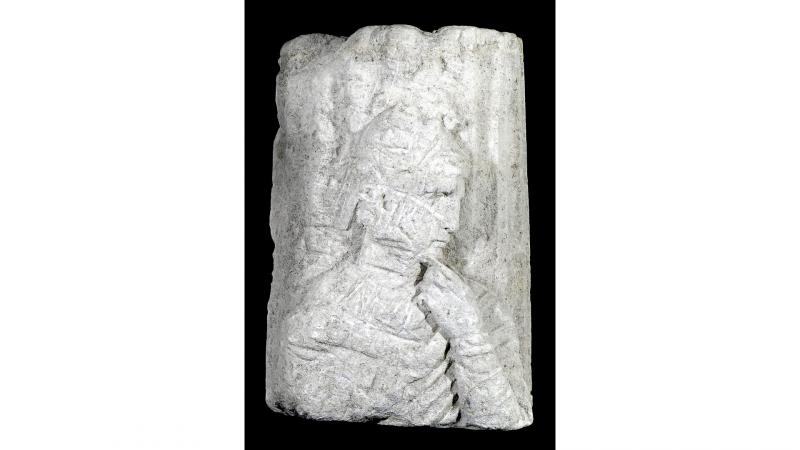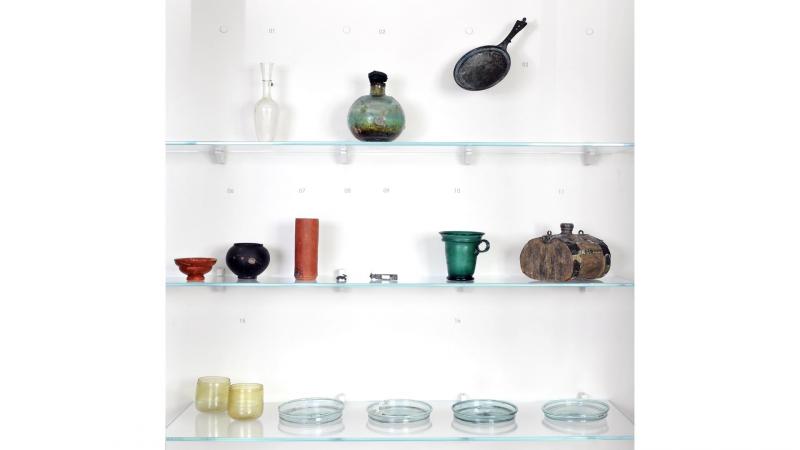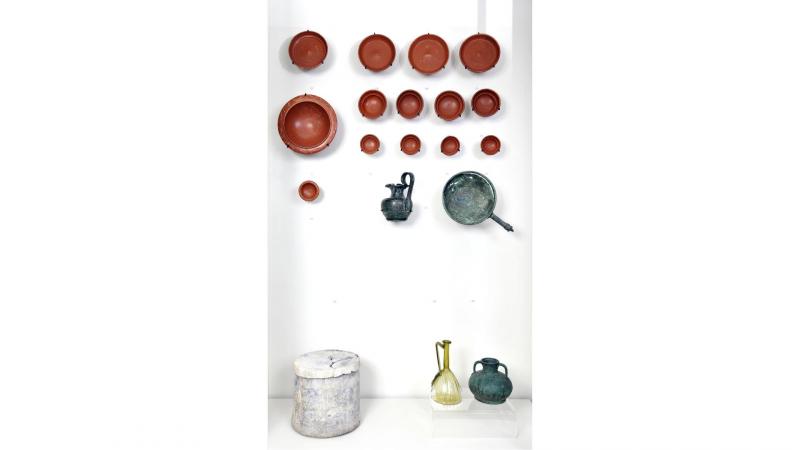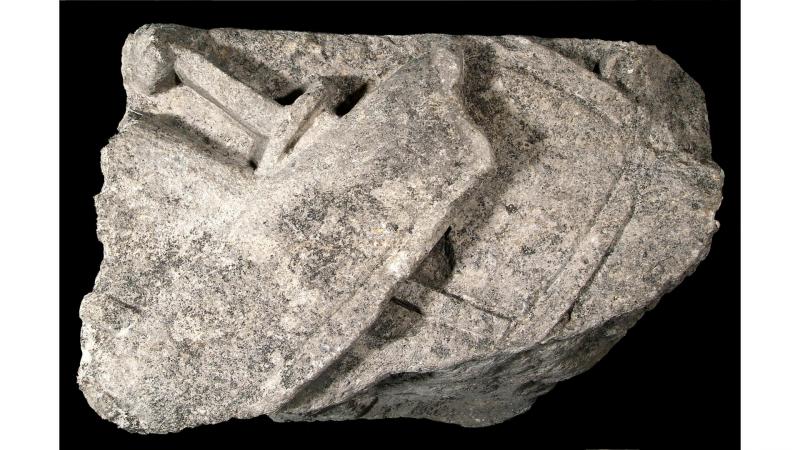In 1866, land-clearing work undertaken at "Fecheroux" in Vervoz unearthed the existence of architectural debris that dates back to the Gallo-Roman era. Excavation campaigns carried out between 1893 and 1905 (Ch.-J. Comhaire and F. Hénaux) highlighted the presence of an exceptional funeral collection, comprising six tombs arranged around a limestone funerary monument. Three cremation tombs (tombs I and II at the Grand Curtius and tomb IV at the Royal Museums of Art and History of Brussels) are distinguished by exceptional funerary furnishings, which were originally deposited in a wooden chest. Tableware, which comprises a large portion of these deposits, consists of an assortment of glass containers (tomb I and tomb IV) and sigillated ceramics from southern Gaul (tomb II). This evokes the banquet offered to the deceased, as well as the funeral furnishings of the rich tombs under the Hesbaye tumulus.
Two masterpiece funerary monuments bear witness to the early presence of Eastern cults, carried by the Roman army or imported via commercial contacts: an acroterion figure (sphinx) and a fragment of a fluted column which features a funeral Attis in relief. This deity of Phrygian origin, who was the goddess Cybele's consort, is depicted with a pensive and sad demeanour, afflicted by death and waiting for the resurrection.
The original appearance of the funerary monument has been restored, thanks to the numerous fragments of columns, capitals, entablature (frieze and cornice) and roofing found on the site. In all likelihood, it had many analogies with the mausoleum of Lucius Poblicius – a veteran of the 5th legion of Alaudae – which is preserved in the Roman-Germanic Museum in Cologne.
The monument of Vervoz –which represents the flourishing of stone funerary architecture – was the symbol of a family with a high social status, and was profoundly Romanised.



